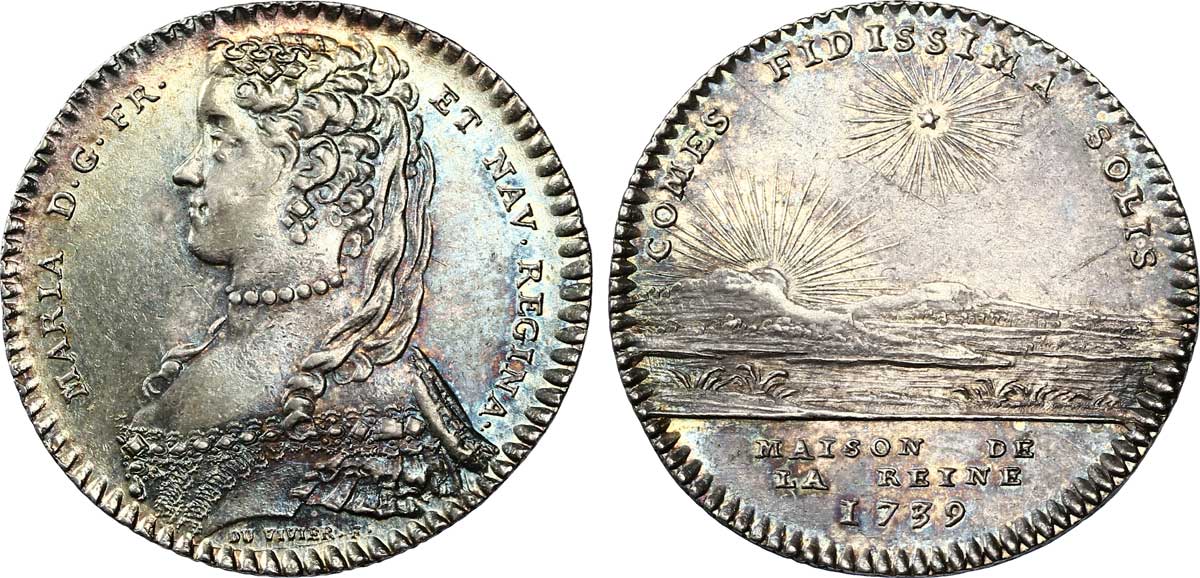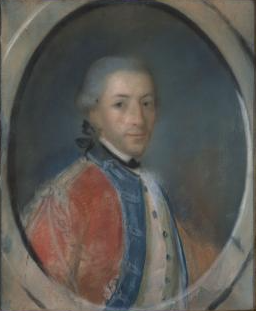|
Zaïre (play)
''Zaïre'' (; ''The Tragedy of Zara'') is a five-act tragedy in verse by Voltaire. Written in three weeks, it was given its first public performance on 13 August 1732 by the Comédie française in Paris. It was a great success with the Paris audiences and marked a turning away from tragedies caused by a fatal flaw in the protagonist's character to ones based on pathos. The tragic fate of its heroine is caused not through any fault of her own, but by the jealousy of her Muslim lover and the intolerance of her fellow Christians. ''Zaïre'' was notably revived in 1874 with Sarah Bernhardt in the title role, and it was the only one of Voltaire's plays to be performed by the ''Comédie française'' during the 20th century. The play was widely performed in Britain well into the 19th century in an English adaptation by Aaron Hill and was the inspiration for at least thirteen operas. Plot, characters, and themes ''Zaïre'' was the first successful French tragedy to include Fren ... [...More Info...] [...Related Items...] OR: [Wikipedia] [Google] [Baidu] |
Voltaire With Plays
François-Marie Arouet (; 21 November 169430 May 1778) was a French Enlightenment writer, historian, and philosopher. Known by his ''nom de plume'' M. de Voltaire (; also ; ), he was famous for his wit, and his criticism of Christianity—especially of the Roman Catholic Church—and of slavery. Voltaire was an advocate of freedom of speech, freedom of religion, and separation of church and state. Voltaire was a versatile and prolific writer, producing works in almost every literary form, including plays, poems, novels, essays, histories, and scientific expositions. He wrote more than 20,000 letters and 2,000 books and pamphlets. Voltaire was one of the first authors to become renowned and commercially successful internationally. He was an outspoken advocate of civil liberties and was at constant risk from the strict censorship laws of the Catholic French monarchy. His polemics witheringly satirized intolerance, religious dogma, and the French institutions of his day. His be ... [...More Info...] [...Related Items...] OR: [Wikipedia] [Google] [Baidu] |
Crusades
The Crusades were a series of religious wars initiated, supported, and sometimes directed by the Latin Church in the medieval period. The best known of these Crusades are those to the Holy Land in the period between 1095 and 1291 that were intended to recover Holy Land, Jerusalem and its surrounding area from Muslim conquests, Islamic rule. Beginning with the First Crusade, which resulted in the recovery of Jerusalem in 1099, dozens of Crusades were fought, providing a focal point of European history for centuries. In 1095, Pope Pope Urban II, Urban II proclaimed the First Crusade at the Council of Clermont. He encouraged military support for List of Byzantine emperors, Byzantine emperor Alexios I Komnenos, AlexiosI against the Seljuk Empire, Seljuk Turks and called for an armed pilgrimage to Jerusalem. Across all social strata in western Europe, there was an enthusiastic response. The first Crusaders had a variety of motivations, including religious salvation, satisfying feud ... [...More Info...] [...Related Items...] OR: [Wikipedia] [Google] [Baidu] |
Marie Leszczyńska
Maria Karolina Zofia Felicja Leszczyńska (; ; 23 June 1703 – 24 June 1768), also known as Marie Leczinska, was Queen of France as the wife of King Louis XV from their marriage on 4 September 1725 until her death in 1768. The daughter of Stanisław Leszczyński, the deposed King of Poland, and Catherine Opalińska, her 42-years and 9 months service was the longest of any queen in French history. A devout Roman Catholic throughout her life, Marie was popular among the French people for her numerous charitable works and introduced many Polish customs to the royal court at Versailles. She was the grandmother of the French kings Louis XVI, Louis XVIII and Charles X. Early life Born as a member of the House of Leszczyński, Maria Karolina Zofia Felicja Leszczyńska ( Wieniawa) was the second daughter of Stanislaus I Leszczyński and his wife, Countess Catherine Opalińska. She had an elder sister, Anna Leszczyńska, who died of pneumonia in 1717. Maria's early life was troubled ... [...More Info...] [...Related Items...] OR: [Wikipedia] [Google] [Baidu] |
Louis XV Of France
Louis XV (15 February 1710 – 10 May 1774), known as Louis the Beloved (french: le Bien-Aimé), was King of France from 1 September 1715 until his death in 1774. He succeeded his great-grandfather Louis XIV at the age of five. Until he reached maturity (then defined as his 13th birthday) on 15 February 1723, the kingdom was ruled by his grand-uncle Philippe II, Duke of Orléans, as Regent of France. Cardinal Fleury was chief minister from 1726 until his death in 1743, at which time the king took sole control of the kingdom. His reign of almost 59 years (from 1715 to 1774) was the second longest in the history of France, exceeded only by his predecessor, Louis XIV, who had ruled for 72 years (from 1643 to 1715). In 1748, Louis returned the Austrian Netherlands, won at the Battle of Fontenoy of 1745. He ceded New France in North America to Great Britain and Spain at the conclusion of the disastrous Seven Years' War in 1763. He incorporated the territories of the Duchy of Lorra ... [...More Info...] [...Related Items...] OR: [Wikipedia] [Google] [Baidu] |
Charles-François Racot De Grandval
Charles-François Racot de Grandval (25 September 1710 – 23 October 1784) was an 18th-century French actor and playwright. Some works *1732: '' Zaïre'' (actor) *1732: ''Le Bord.., ou le Jean-F..tre puni'' (with Anne Claude de Caylus) *1749: ''Agathe ou la Chaste princesse'' *1749: ''Le Pot de chambre cassé'' (également attribué à son père) *1750: ''Sirop-au-cul ou l'Heureuse délivrance'' *1755: ''Le Tempérament'' *1773: ''La nouvelle Messaline'' See also * Troupe of the Comédie-Française in 1752 External links Charles-François Racot de Grandvalon data.bnf.fr Writers from Paris 1710 births 1784 deaths 18th-century French male actors French male stage actors 18th-century French dramatists and playwrights Troupe of the Comédie-Française {{France-actor-stub ... [...More Info...] [...Related Items...] OR: [Wikipedia] [Google] [Baidu] |
Quinault-Dufresne
Abraham-Alexis Quinault, called Quinault-Dufresne, (9 September 1693 in Verdun – 12 February 1767 in Paris) was a French actor. He was a member of the Quinault family of actors. He made his début at the Comédie-Française on 7 October 1712, playing Orestes in ''Électre'' (1709) by Prosper Jolyot de Crébillon, and was admitted to the company in December. He had striking good looks and musical talent, and he soon took over the male leading roles in both comedy and tragedy, and remained the star of the troupe until his retirement in 1741. Voltaire asked him to play the title role in his first tragedy, ''Œdipe'', in 1718, and the actor went on to create many roles for Voltaire, including some in his most popular plays: Orosmane in ''Zaïre'' (1732), Zamore in ''Alzire'' (1736) and Euphémon the son in ''L'Enfant prodigue'' (The Prodigal Son, 1736). For Crébillon he created title roles in ''Rhadamiste et Zénobie'' (1711) and ''Pyrrhus'' (1726), and had starring roles i ... [...More Info...] [...Related Items...] OR: [Wikipedia] [Google] [Baidu] |
Giuseppina Grassini By Louise Élisabeth Vigée Le Brun 2
''Giuseppina'' is a 1960 short British documentary film produced by James Hill, which was filmed in 1959, in Mandriole, Emilia-Romagna, near Ravenna in the north east of Italy. It won the Academy Award for Best Documentary (Short Subject). Production of the film was sponsored by the British Petroleum company (BP), which also distributed the film. The BP webpage summarizes the film as, "set at an Italian petrol station where various characters pass through on their onward journey, while entertaining and playing with the attendant's daughter, Giuseppina." In the 1960s and early 1970s, ''Giuseppina'' was broadcast 185 times on British television as a trade test colour film.Keys, Andrew (2007)."The Statistician's Guide to Trade Test Colour Films" webpage of the "Test Card Circle" website archived at WebCite fro18 June 2008. Excerpts were also shown on '' Vision On'', the BBC programme for deaf and hard-of-hearing children. It was released as an extra on the BFI Flipside DVD relea ... [...More Info...] [...Related Items...] OR: [Wikipedia] [Google] [Baidu] |
Jean-Louis Wagnière
Jean-Louis Wagnière (15 October 1739, Rueyres, Vaud, Switzerland7 April 1802, Ferney-Voltaire) was Voltaire's secretary from 1756 to 1778, when Voltaire died. In Voltaire’s Service Wagnière entered Voltaire’s service as his valet de chambre early in 1755 shortly after he arrived at Prangins near Lake Geneva. He followed him to his house at Les Délices and then to Ferney. He was soon given the job of assisting Voltaire's secretary, Cosimo Alessandro Collini, as he had good handwriting and liked literature. Voltaire taught him Latin. In June 1756 Voltaire abruptly dismissed Collini because he had insulted Madame Denis in a letter. After Collini’s departure, Wagnière took over his role. Wagnière was Voltaire's most loyal secretary, and the only one who was not dismissed. His discretion, his enormous capacity for work, his fine handwriting which was always clear and easy to read and above all his scrupulous honesty are among the reasons for his unusually long servic ... [...More Info...] [...Related Items...] OR: [Wikipedia] [Google] [Baidu] |
Younge And Garrick In Zara
Younge is an English language surname. Notable people with this name include: * Adrian Younge (born 1978), American composer, arranger and music producer *Fred Younge (1825–1870), English actor in Australia *Gary Younge (born 1969), British journalist with ''The Guardian'' *John Milton Younge (born 1955), US District Judge in Pennsylvania *Sammy Younge Jr. Samuel Leamon Younge Jr. (November 17, 1944 – January 3, 1966) was a civil rights and Voting rights in the United States, voting rights activist who was murdered for trying to desegregate a "Racial segregation in the United States, whites o ... (1944–1966), American civil rights activist, murdered {{surname, Younge English-language surnames ... [...More Info...] [...Related Items...] OR: [Wikipedia] [Google] [Baidu] |
Baptism
Baptism (from grc-x-koine, βάπτισμα, váptisma) is a form of ritual purification—a characteristic of many religions throughout time and geography. In Christianity, it is a Christian sacrament of initiation and adoption, almost invariably with the use of water. It may be performed by sprinkling or pouring water on the head, or by immersing in water either partially or completely, traditionally three times, once for each person of the Trinity. The synoptic gospels recount that John the Baptist baptised Jesus. Baptism is considered a sacrament in most churches, and as an ordinance in others. Baptism according to the Trinitarian formula, which is done in most mainstream Christian denominations, is seen as being a basis for Christian ecumenism, the concept of unity amongst Christians. Baptism is also called christening, although some reserve the word "christening" for the baptism of infants. In certain Christian denominations, such as the Lutheran Churches, baptism ... [...More Info...] [...Related Items...] OR: [Wikipedia] [Google] [Baidu] |
Cesarea
Caesarea () ( he, קֵיסָרְיָה, ), ''Keysariya'' or ''Qesarya'', often simplified to Keisarya, and Qaysaria, is an affluent town in north-central Israel, which inherits its name and much of its territory from the ancient city of Caesarea Maritima ( el, Καισάρεια). Located midway between Tel Aviv and Haifa on the coastal plain near the city of Hadera, it falls under the jurisdiction of Hof HaCarmel Regional Council. With a population of , it is the only Israeli locality managed by a private organization, the Caesarea Development Corporation, and also one of the most populous localities not recognized as a local council. The ancient city of Caesarea Maritima was built by Herod the Great about 25–13 BCE as a major port. It served as an administrative center of the province of Judaea (later named Syria Palaestina) in the Roman Empire, and later as the capital of the Byzantine province of Palaestina Prima. During the Muslim conquest in the 7th century, it was the ... [...More Info...] [...Related Items...] OR: [Wikipedia] [Google] [Baidu] |






